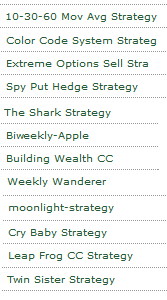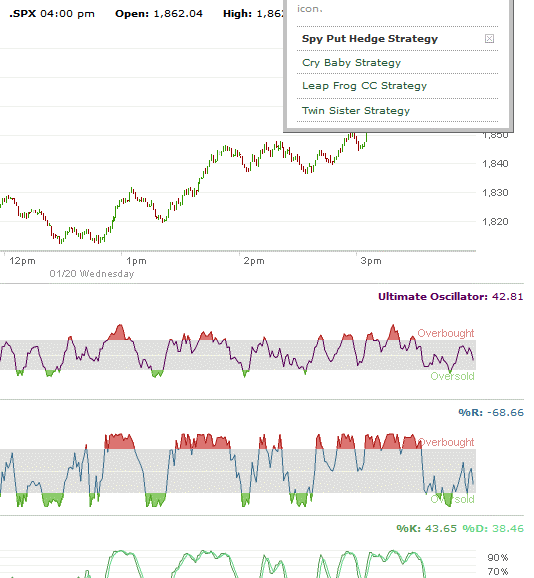When I invest I use technical tools to assist in the timing of a trade. Technical tools can be designed for all types of trading endeavors. An investor posted this question on the members forum regarding learning technical analysis.
Investor Questions:
I am a novice in Technical analysis. I want to subscribe to a Charting website which can give me support and Trend lines without my attempting do it myself. If any one has come across any site which has ready information, please advise me. Thanks regards Sada
Some Answers:
I normally caution investors that using technical charting websites to “do the work” for you rather than learn how to apply the technical tools and what they mean for your investing, is in general a poor choice if the goal is to be a long-term investor trying to build a portfolio that will grow yearly with limited losses.
I believe there are 4 steps to take when learning how to use technical analysis and how to understand the signals.
Step 1: Investor Type and Investment Products
The first step to successfully using technical tools and analysis is deciding on what type of investor you want to be and what type of investments you want to trade. For example are you following small cap stocks, ETFs, Mutual Funds, Blue Chip Stocks, only dividend paying stocks, forex, bonds or a multitude of other available products.
Step 2: Strategies To Match Your Goals
The second step is to select what strategy you want to use and what your goals are. For example, if you decide to sell options for income, you will want to select specific technical tools that can meet your goal. For example the technical tools outlined in the Weekly Wanderer Strategy is good choice for selling option premium in any market, up or down.
If your goal is to build a dividend portfolio then you will want tools that can select strong stocks that will not stop paying their dividend or not increase their dividend. Technical Tools like the Color Code System can easily accomplish this for you as it times when stocks are undervalued, fairly valued and overvalued. You will want tools that can grow your dividend portfolio faster and safer than simply earning quarterly dividends. Strategies like the Hide and Seek Covered Calls Strategy lays out the tools and the techniques for that type of portfolio. Other technical tools can be found in the Building Wealth Strategy.
On the other hand perhaps the goal is to just earn the income from the dividends being paid out which then means using the right tools to time when to buy dividend stocks and when to sell out when the criteria of safety of capital and dividend are no longer being met. The Home On The Range Strategy lays out those tools. Other investors simply want to trade highly volatile ETFs which are perhaps more risky but can also be more exciting than a dividend portfolio and which can provide bigger profits but often bigger losses as well. Strategies such as I outlined in the 4 Investment Strategies For Ultra ETFs lay out the specific technical tools and how to apply them.
There are dozens of technical tools available for investors. The key is to understand what tools to choose to match your investing goal.
Step 3: Create Your Own Charts
The next step is to use your discount broker’s software to create your own charts built using the technical tools outlined in the various strategies. For example, below is a list of the strategies I have set up with my broker’s software. Once I have them setup I simple select from my drop down list and the chart changes to match the technical tools outlined in each of the strategies.

Strategies Outlined At Broker
I created the various charts with my broker’s software and then applied the proper technical tools, eliminating all the rest of the tools. I then quickly move among the various strategies depending on what my goal is and what I want to trade.

Typical technical tool layout with my broker
All of this is available from my own broker and is included in my brokerage fees each time I trade.
Step 4: Paper Trade The Strategies
The final step is to paper trade the various strategies. Keep track of your winners and losers. This will allow you to eliminate those strategies that do not provide the most consistent winning trades for you and you are learning through paper trading which in today’s brokerage accounts is the same as real-time trading without losing capital. I normally recommend an investor start with $50,000 in their paper trading account. Then see if within 6 months you can eliminate some strategies and become proficient in others. Once I reach a point where 80% of my trades are winners I then apply that strategy to my account using actual capital. If I then stumble from the outset and have more than half of my initial trades fail, I go back to cash, and return to paper trading until I uncover what I was doing wrong.
Summary
Not all strategies are for all investors. I use a lot of different strategies but I have been investing for over 4 decades. I have been through bear markets in 1973 to 1974, 1980 to 1982, 1987, 2000 to 2003, 2007 to 2009 and perhaps a new one this year. Years of experience allows me to trade in a variety of strategies but when I started I followed the above 4 steps and selected the strategies that worked best for my investing objectives. As years passed I expanded my skills and added in more strategies.
However other investors remain focused on one strategy or one investing objective only and become extremely proficient at it.
Thanks for your questions.
Teddi
Disclaimer: There are risks involved in all investment strategies and investors can and do lose capital. Trade at your own risk. Stocks, options and investing are risky and can result in considerable losses. None of the strategies, stocks or information discussed and presented are financial or trading advice or recommendations. Everything presented and discussed are the author’s own trade ideas and opinions which the author may or may not enter into. The author assumes no liability for topics, ideas, errors, omissions, content and external links and trades done or not done. The author may or may not enter the trades mentioned. Some positions in mentioned stocks may already be held or are being adjusted.
Internal Stock and Option Trades Links
Put Selling Strategies For Members
Covered Calls Strategies For Members
Profit And Income Strategies Index
Stock and Option Strategies For Members
Stock And Option Trades Explained For Members
Ask A Question About A Trade You Are In

